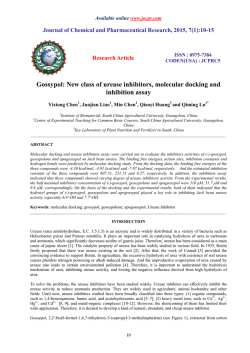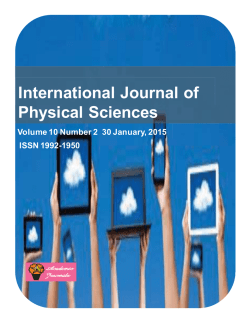
Hidden in the Neutrons: Physical Evidence for Lunar True Polar
46th Lunar and Planetary Science Conference (2015) 2675.pdf Hidden in the Neutrons: Physical Evidence for Lunar True Polar Wander M.A. Siegler1, R.S. Miller2, J.T. Keane3, I. Matsuyama3, D.A. Paige4, M. J. Poston5, D. J. Lawrence6 (1Planetary Science Institute, 2University of Alabama in Huntsville, 3University of Arizona, 4UCLA, 5Caltech/JPL, 6JHU-APL [email protected]) Introduction: Epithermal neutrons provide a robust measure of hydrogen abundance and have been used on many planetary bodies to measure hydrogen enhancements [e.g. 1,2,3,4]. Lunar polar epithermal neutrons display a strong, statistically significant, offpolar enhancement that is not clearly explainable by the current thermal environment. One plausible explanation is that these enhancements represent locations of past water ice stability [5]. Here we suggest the polar hydrogen distributions are consistent with an hypothesis incorporating a record of lunar true polar wander (TPW). Specifically, regions near the maxima of the hydrogen distributions may be evidence of a “paleo-pole”. Of particular note is that the location and wander direction from the paleo-pole are consistent with theoretical expectations of TPW caused by a large mass anomaly associated with the Procellerum KREEP Terrain (PKT), an outcome expected from the postulated thermal anomaly in the PKT mantle [e.g. 6]. Background: Suppression of the epithermal neutron leakage flux provides a measurements of hydrogen to depths of approximately a meter and remains the key evidence of subsurface ice and hydrated minerology on many solar system bodies. The distribution of hydrogen at the lunar poles (see Figure 1) has been a longstanding enigma [1,7,8,9], and a satisfactory explanation for the observed spatial distribution has remained elusive. Recent deposition of volatiles from comets/asteroids or solar wind-related processes is expected to be controlled by temperature. Yet the inter-polar hydrogen spatial distributions are more closely correlated to each other than they are to expectations based on thermal models of the respective poles [10]. This inter-polar hydrogen correlation is especially strong when the statistical significance of observed neutron features [9,11] is taken into account. Correlation: Spatial relationships between multiple datasets have been quantified using a 2D correlation analysis (see Figure 2). The only statistically significant inter-polar correlation is between the water equivalent hydrogen (WEH) abundance distributions. These were derived from epithermal measurements [9,11] and show a strong correlation (max significance at an offset of ~168±13o equivalent to 9.3σ) supporting a near-antipodal relationship. Inter-polar correlations between temperature related parameters, including predicted ice locations [10], are not significant. The peaks in hydrogen enhancement are located at roughly (84.9N, 147.9E) and (-84.2S, 309.4E). These locations are coincident with the 44 km diameter Rozhdestvenskiy U in the North and the 100 km Cabeus crater in the South. Although both of these craters are perminantly shadowed regions (PSRs), neither are particularly unique in their thermal environment (colder craters exist), and they are not unique in their ability to store water ice. If these craters exisited while the Moon was in a former orientation, they might also be expected to have retained Hydrogen more effectively due to their then polar location. Figure 1: A view of Lunar Prospector epithermal neutron counts for the North and South Lunar poles, respectively. Red “x”s mark the peak Hydrogen detection in the North and yellow in the South, projected onto eachother. Figure 2: Significance of 2D correlation between the North and South epithermal neutron data noting the strong correlation between the data only when placed near an antipodal configuration (180o), with a slight offset (at 168o) due to topographic effects. We note that hydrogen sources within specific PSRs can be used to match spactially deconvolved neutron data [7, 21], but there is not a clear reason why certain craters should have higher concentration than others having similar thermal environments. Figure 2 summarizes the 2D-correlation of the polar WEH maps. The departure from an exact 180o offset is within error and expected due to the effects of topography, which will undoubtably have some control over hydrogen stability. Theory: One simple explaination for antipodal off-polar hydrogen enhancements is that these locations represent the position of the past lunar rotation 46th Lunar and Planetary Science Conference (2015) axis, prior to an episode of true polar wander (TPW). TPW, reorientation of the body with respect to the rotation axis, has been proposed to explain features on Mars [e.g. 12,13], Enceladus [14], Europa [15]; Mercury [16], the Earth [17], and the Moon [18]. In a TPW scenario, water ice, collected at these ancient poles and was largely lost during the transition to the current spin axis orientation, but left behind a record, possibly in hydrated mineralogy or adsorbed water still visible to neutron spectrometer today. These hydration deposits need not be confind to present-day PSR regions and may reflect past topography. Despite the effects of topography, near polar PSRs on a low obliquity body will increase with proximity to the pole. If the lunar spin axis differed in the past, one would expect an enhancement in cold traps (and ice) at this theorized paleo-pole. The proposed 5.5 degree reorientation in latitude is realitivly modest compared to that suggested by magnetic [19, 25] or gravity [18] data. However, any TPW event requires a perturbation to the inertia tensor. In order to determine possible geological causes for this TPW, we developed a forward model for removing simple, artificial mass anomalies (Figure 3) from the present-day (non-hydrostatic) lunar inertia tensor. Figure 3: Simple model of warm, low density mantle anomaly placed below the PKT region. Through a parameter-space survey, we find that the required reorientation is consistent with the formation of a low-density anomaly beneath the PKT (Figure 4). While the parameter space produces many other possible solutions, representing both positive and negative density anomolies, no other physically plausible solutions correlate with observed geological features (e.g. other impact basins, including South Pole-Aitken). Our proposed negative anomaly is consistent with the existance of a region of warm mantle below the PKT. Such an anomaly has been predicted to result from the concentration of crustal radiogenics in this region [6]. 2675.pdf Figure 4: Surface projection of low density, sub-PKT mantle anomaly (blue) capable of explaining the observed TPW signal within uncertainties. The locations of other plausible low-density mass anomaly solutions are plotted (within white contours), but do not correlate with any known geologic feature. Black contours indicate bounds of lunar mare. Green contour encloses Thorium anomalies (3.5 ppm-level). Red lines indicate PKT border gravity anomalies [20]. The proposed paleo-poles are denoted by the red (North) and yellow (South) “x”s. Here we propose that the statistically significant off-polar antipodal features in lunar epithermal neutron data may present a clear and testable hypothesis of a record of true polar wander. The observed neutron signature is either a low resolution signature of recent, fairly concentrated water ice deposits within the current lunar cold traps, or a diffuse, impact-mixed, ancient, hydrated regolith (consistent with ancient TPW). This can be tested. Recently delivered hydrogen should be located within permanently shadowed regions and would need to be relatively concentrated in specific regions [7,21,10]. Ancient hydration associated with TPW would be seen both inside and outside of shadowed regions, but would need to be associated with an observable mass anomaly, which may be detectable with GRAIL gravity data [18], and a future lunar geophysical missions [e.g. 22,23].Currently available neutron spectrometer spatial resolution does not allow to differentiate between these two hypotheses [7]. However, new neutron measurements that could spatially resolve hydrogen concentrations within individual PSRs could discriminate between these two hypotheses [24]. References:[1] Feldman et al., 1998, Science; [2] Feldman et al., 2002, Science; [3] Lawrence et al. 2013, Science; [4] Prettyman, 2012, Science; [5] Siegler et al. 2014, JGR; [6]Wieczorek and Phillips, 2000, JGR;[7] Eke et al., 2009 Icarus;[8] Mitrofanov et al., 2010, Science; [9] Miller et al., 2012, JGR; [10] Paige et al., 2010, Science; [11] Miller et al., 2014, Icarus; [12] Schultz and Lutz, 1988, Icarus; [13] Perron et al. 2007, Nature; [14] Nimmo and Pappalardo, 2006, Nature; [15] Schenk et al., 2008, Nature;[16] Matsuyama and Nimmo, 2009, JGR; [17] Kirschvink et al., 1997, Science; [18] Keane and Matsuyama, 2014, GRL; [19] Runcorn, 1983, Nature; [20] Andrews-Hanna et al. 2014, Nature; [21] Teodoro et al.,2010, GRL [22] Cohen et al., 2009; [23] Neal et al. 2010, LPSC; [24] Lawrence et al., 2014, LPSC, [25] Takahashi et al. 2014, Nature GeoSci.
© Copyright 2025
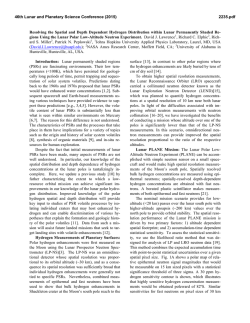
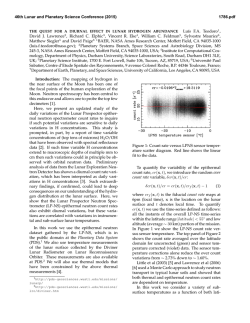

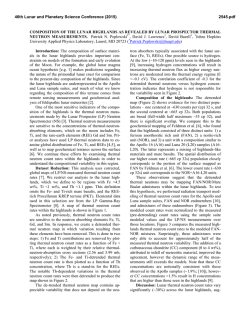
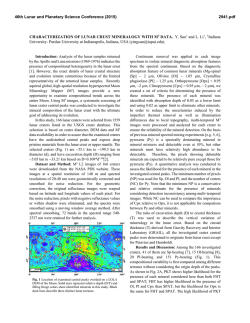
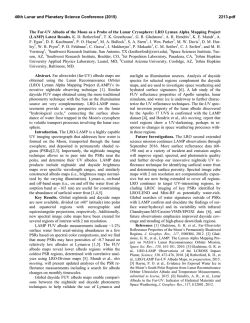
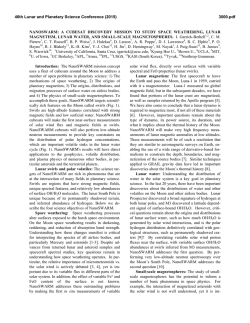

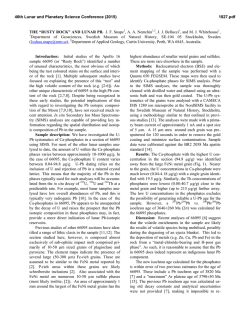
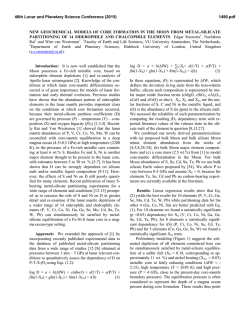
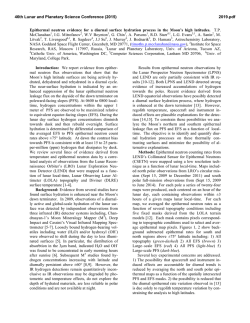
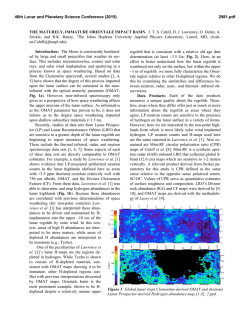
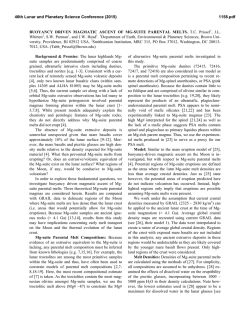
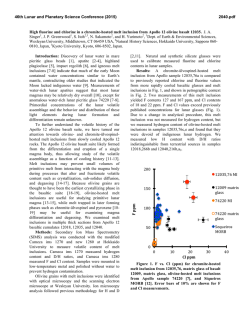
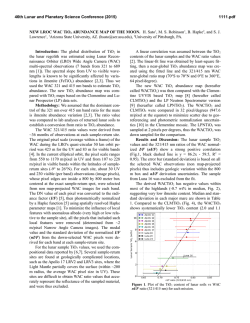
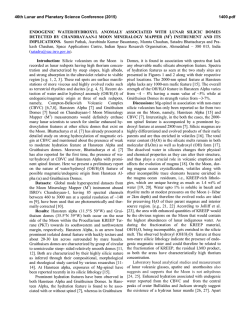
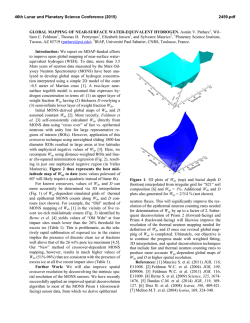
![Download the PDF [178 KB]](http://s2.esdocs.com/store/data/000499344_1-7f4373c1afe39f332b14a8d11d1a7c7f-250x500.png)
